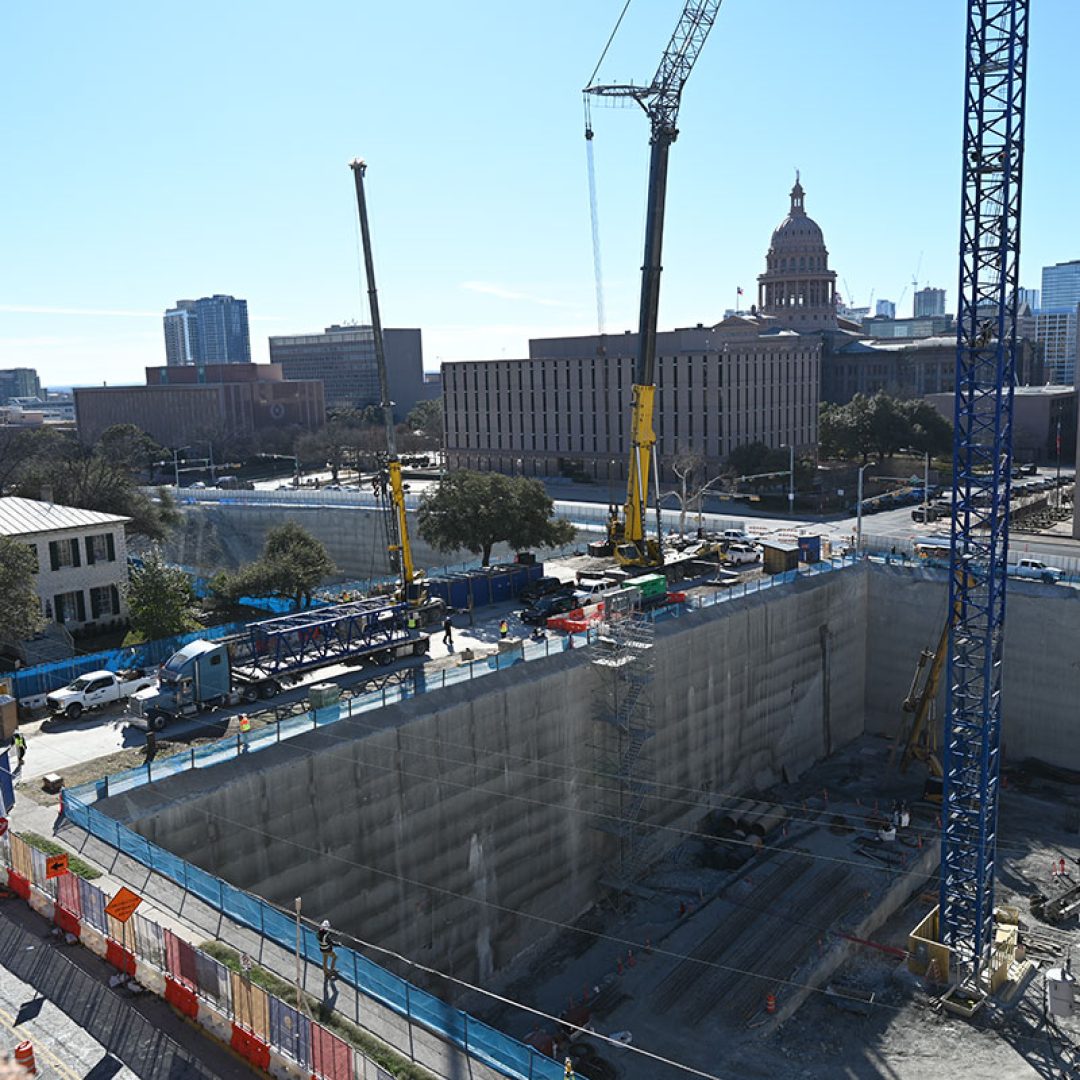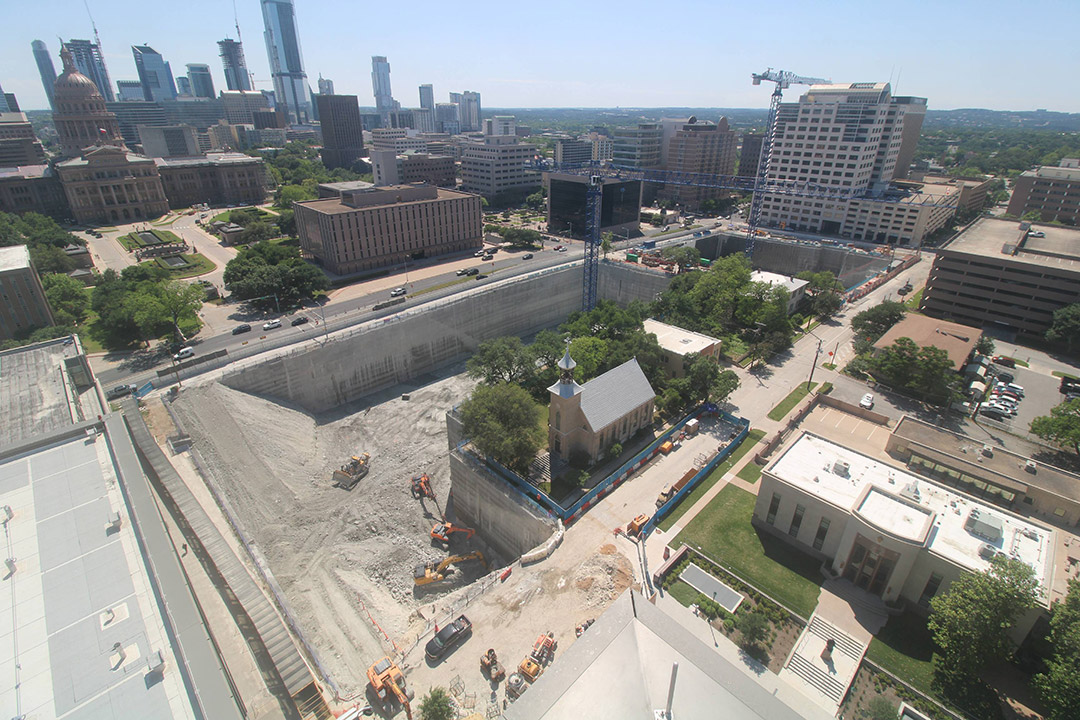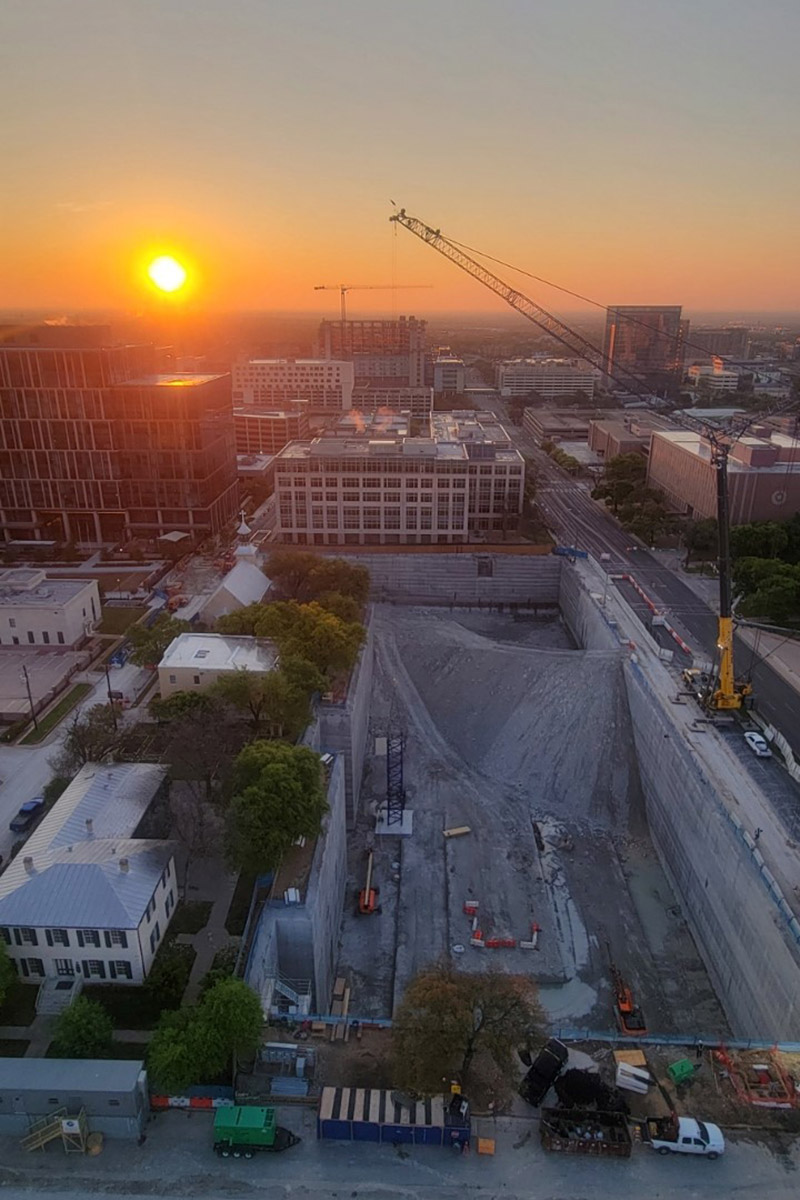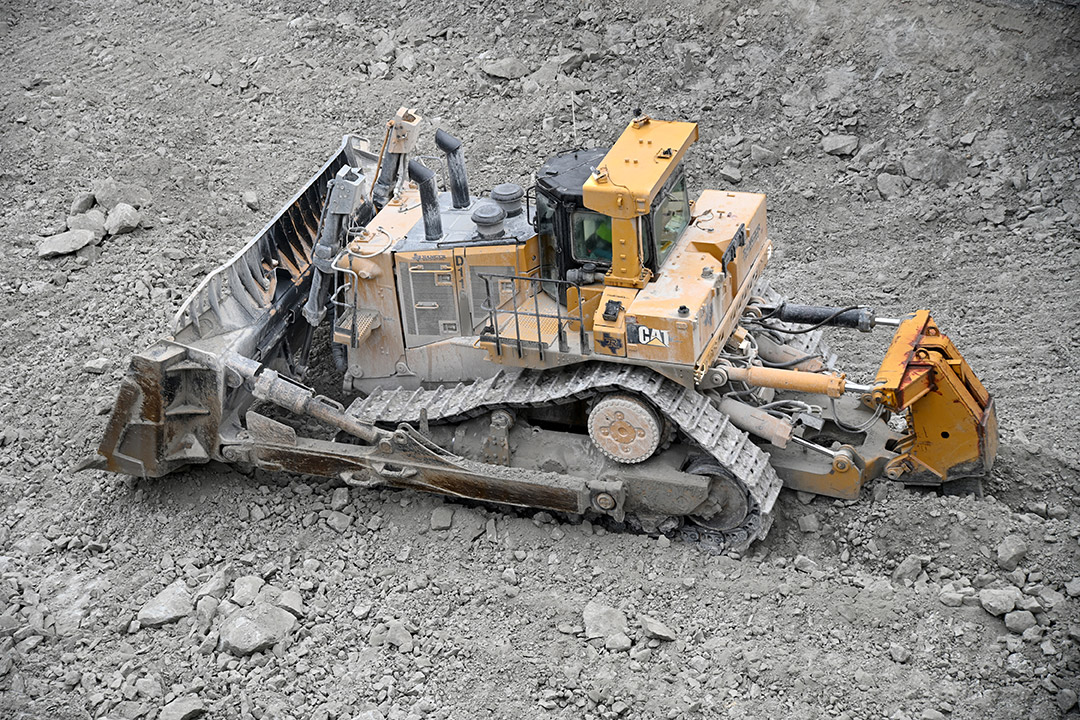It has been less than three years since the last crane for Phase I came down, and the George H.W. Bush and Barbara Jordan State Office Buildings were put into operation. A crane is once again flying over the Capitol Complex as the Phase II project team begins setting the foundational piers that will support the new state office buildings at 1500 Congress and 1501 Lavaca. A 285-foot crane was installed on the 1501 Lavaca site in January. The crane for 1500 Congress is scheduled for installation in March, with the crane for the Texas Capitol Mall arriving in mid-June.
Planning for a Big Arrival Takes Time
The project team’s first steps in planning the installation of three behemoth tower cranes on the adjacent sites of the Phase II project required understanding the relation of the cranes to each other, the planned building construction, overhead utilities, and the buildings and streets surrounding the sites. JE Dunn Superintendent Mike Hamline is in charge of site operations on Phase II and explains that selecting tower crane positions is about production and safety.
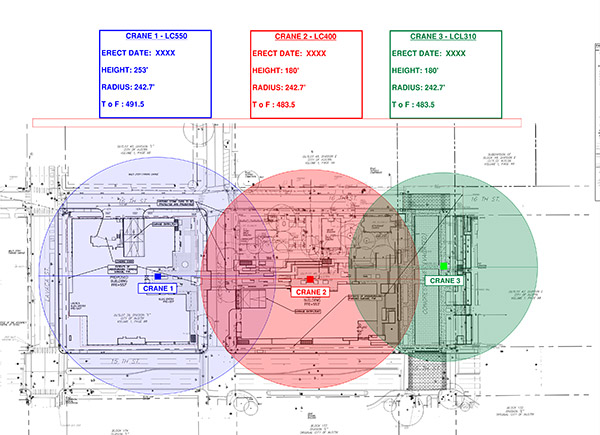 “We draw circles on the logistic map that represent swing paths based on the radius reach of each crane. We position the cranes to stay on site as long as possible to deliver loads of equipment and materials to areas that maximize work efficiency until we reach the point in construction when the cranes become obsolete and are in the way,” said Mike. “Since we will have multiple cranes working in the same area, the swing paths overlap, so we vary the heights of the cranes and plan how they will interact to ensure the’ safety of everyone and everything within and immediately adjacent to the crane swing areas.”
“We draw circles on the logistic map that represent swing paths based on the radius reach of each crane. We position the cranes to stay on site as long as possible to deliver loads of equipment and materials to areas that maximize work efficiency until we reach the point in construction when the cranes become obsolete and are in the way,” said Mike. “Since we will have multiple cranes working in the same area, the swing paths overlap, so we vary the heights of the cranes and plan how they will interact to ensure the’ safety of everyone and everything within and immediately adjacent to the crane swing areas.”
Phase II Crane Plan depicting overlapping swing areas.
Cranes are built in sections, which allows the project team to vary the heights while ensuring that the cranes remain higher than the top of the planned construction and surrounding buildings.
“The Clements Building is adjacent to the 1501 Lavaca site, so we built the crane with a 30-foot clearance of the jib above the top of the building. The crane won’t swing over the building, but seeing a crane moving outside your office window can be distracting. We gave the crane a high clearance so people wouldn’t see it move.” Mike said.
The tower crane for the 1501 Lavaca construction is located almost in the center of the site while remaining outside of the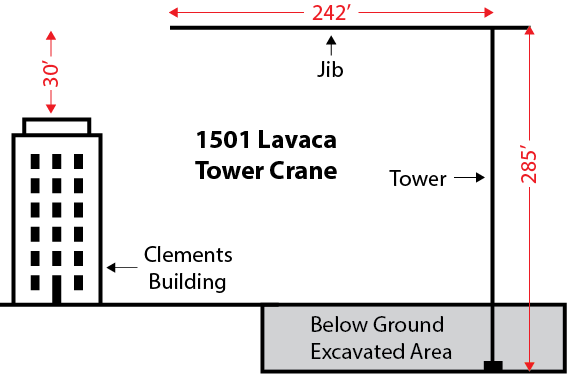 building and garage ramp footprint. This will give the crane the most capacity for picking up loads from trucks entering the site at Colorado Street.
building and garage ramp footprint. This will give the crane the most capacity for picking up loads from trucks entering the site at Colorado Street.
Due to the height of the cranes and the load weights they carry, installing tower cranes in downtown Austin requires an extensive permitting process. The permits must be approved by the State, the City of Austin, the Federal Aviation
Commission, Austin-Bergstrom International Airport, and hospitals that operate helipads in Austin. The total planning and permitting process for the 1501 Lavaca crane took seven months.
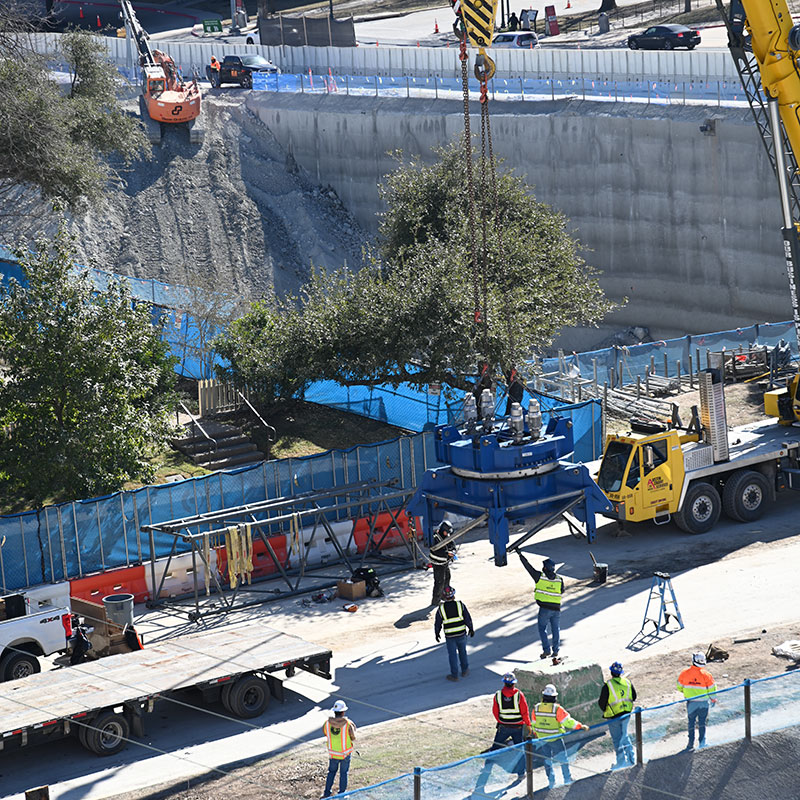
The JE Dunn Assemble and Dismantle team prepare to unload a section of the 1501 Lavaca tower crane from a truck.
Assembly Time
A unique feature of JE Dunn Construction’s services is that they own their own cranes, which are managed from a centrally located crane yard in Kansas City, Missouri. While the project team was working through the permitting process, the crane was prepared for transport, and the project team coordinated the assembly plan with the crane installation experts from JE Dunn’s Assemble and Dismantle (AD) Department.
Part of the assembly plan is preparing the location of the crane. The tower crane for the 1501 Lavaca site can carry loads up to 39,670 pounds which requires a strong foundation. Beaird Drilling Services drilled and installed four concrete piers. Before the project team poured the foundation, the crane base was placed on top of the piers and surrounded with CTR rebar. The concrete was poured to embed the crane base in the foundation. The final step was curing the concrete to 3500 psi.
The thirty-piece crane assembly was transported on sixteen trucks along a preplanned route to a staging area in Elgin, Texas. All the parts of the assembly were inspected before delivery to the project site. A six-person team of installation experts led by AD Director Tim Reff traveled with the crane.
Assembling a tower crane is highly specialized, controlled work. Superintendent Mike Hamline established a 75-foot safety zone for the crane installation. During the two-and-a-half-day installation, only necessary personnel were allowed inside the safety zone.
Austin Crane provided an assembly crane taller than the tower crane to assist with the installation and JE Dunn’s AD team assembled the crane.
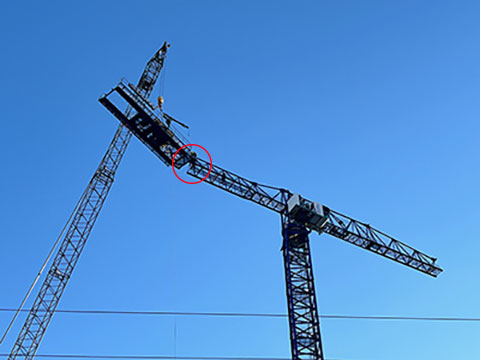 Depending on the size or complexity of the site, a project team may need to close down a jobsite during a tower crane assembly. However, due to the open site layout on 1501 Lavaca and JE Dunn’s thorough assembly plan, the project team was able to keep drilling piers holes on the west side of the site during the crane assembly process.
Depending on the size or complexity of the site, a project team may need to close down a jobsite during a tower crane assembly. However, due to the open site layout on 1501 Lavaca and JE Dunn’s thorough assembly plan, the project team was able to keep drilling piers holes on the west side of the site during the crane assembly process.
After the crane was assembled, there was still a lot of work to do to put the crane into operation. Tower cranes have many electrical components, and each part of the crane must be inspected for performance. Once the 1501 Lavaca crane passed all its tests, the project team put it to work, moving the equipment and material that will soon be placed as the building frame begins to rise from the ground.
A member of the JE Dunn’s AD team (in the red circle) connects a section of the jib held by the assembly crane.
Up and Running
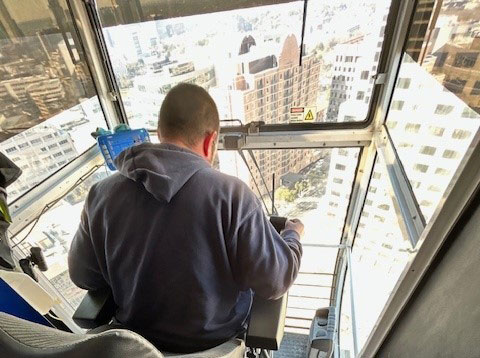 Now that the 1501 Lavaca tower crane is in operation, the project team is working on the plans for the 1500 Congress and Texas Mall tower cranes. The first installation ran exactly as planned, so the team will use the same protocols for the next tower crane installation for 1500 Congress.
Now that the 1501 Lavaca tower crane is in operation, the project team is working on the plans for the 1500 Congress and Texas Mall tower cranes. The first installation ran exactly as planned, so the team will use the same protocols for the next tower crane installation for 1500 Congress.
We thank JE Dunn, Beaird, Austin Crane, and all the individuals who made the crane installation a success, and we celebrate this major milestone in the project.
JE Dunn Crane Operator Gerrard Hennessy pilots the 1501 Lavaca tower crane high above the Capitol Complex.
A View from the Top:
A birdseye view of the State Capitol from the top of the 1501 Lavaca crane.
